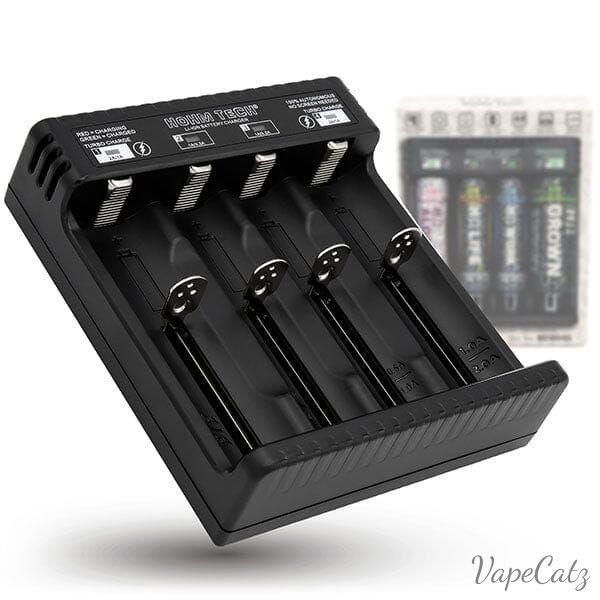
HohmTech Hohm School 4A Quad Bay Charger
USB-C 4 AMP continuous charging power and stability made it possible for Hohm SCHOOL4 to do what it does best…charge precisely and within safety tolerances.
Thinking outside the box, while keeping simplicity and user-error prevention at the forefront with safety features. 18 months of R&D led us to develop an extremely capable charger that makes other chargers look stupid. It has a 3-tier amp BLD (battery length detection) System; has a variable input voltage IPR (input power regulator) feature. This ELIMINATES USER ERRORS and keeps them and their li-ion batteries moving forward without delay. This is simplicity at its best, while not forfeiting usable amperage or precision.
There is no need for a screen on this charger. It is 100% autonomous. It is equipped with our BLD1 System, which automates the step-up/down output so both small and larger cells charge at the proper rate (0.5A, 1A, 2A per channel with 4A total distribution). Even li-ion batteries with a PCB/PCM3 are easily balanced to the correct voltage. This ensures today’s small li-ion batteries’ chemistry integrity is not compromised, allowing them to get the cycle life they deserve.
Applying more forward-thinking targeted towards safety & performance, we integrated input voltage regulation. This is safety 101 here. This allows the charger to not stress or damage USB adapters no matter the power supplying device. The fact is simple: today’s li-ion batteries need precise voltage and amperage delivery to ensure long reliable performance & life…Say hello to Hohm SCHOOL4, the ‘Professor’ of Chargers.
Equipped with:
> BLD1 System: Battery Length Detection automates charge amplification & reduction on li-ion cells.
> Low Voltage Activation2: Allows overly discharged li-ion batteries down to 1.95V to be charged via a 200mA stimulate charge.
> Input-Power Autonomous Regulator integration (no more stressing USB power adapters or ports)
> Compatible with ALL li-ion cells from as short as 30mm to as long as 73mm
> LED indicator that reports [green/red] color and blink variation for quick/easy readout
> PCB/PCM3 compatible so even protected cells aren’t left out in the cold
> Protection 101: A] overcharge; B] short-circuit; C] wrong battery type detection; D] reverse polarity
Choose options

